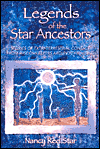
I am very happy that you have come here to the monastery to meet with me and talk about dharma and the World Peace. In the Tibetan tradition, the high-flying bird -- the hawk -- which you saw circling above the monastery, is also a very good sign.
I came to the United States twenty-two years ago. People at that time did not seem to know very much about Buddhism. We Tibetans realized that it would be beneficial to teach and explain the dharma. We began to talk to people about how to create peace within their heart and peace within the world. We taught how to move beyond suffering. I have been doing that for these twenty-two years. We now have this monastery and forty-two branch centers. If you look at me you will see what I do.
How Karma Transforms Lives
In our tradition, to understand karma we must first look at our present lives. If we are living a happy life and things are going well for us, we can draw the conclusion that we were involved in positive actions in our previous lives. If our lives are not going so well, it is a sign that we engaged in negative actions in the past.
If you have the seed of a medicinal flower and you plant this seed, the medicinal flower will grow. So karma is like planting a seed for what will arise in the future. Karma that we have accumulated in the past is something we experience now. Future karma is something that is open to change -- that we can change now by our present actions. If we have a bad situation in our life, through the proper kind of motivation and a heartfelt good intention, we can change that situation to a good one.
Karma is not carved in stone. Our own actions can transform our lives. Much of this depends on the individual and his or her motivation. There are some individuals who have a wonderful altruism. They are called bodhisattvas in our tradition. Their whole being is dedicated toward benefiting others. To do this they first work on themselves. Their own mind becomes enlightened and realized. Then they are able to vastly benefit other sentient beings.
If people don't first work on themselves, if they don't develop their own positive qualities, they will have nothing to give humanity. When they haven't developed themselves, their potential is less. How beneficial an individual is to the planet depends on his or her own spiritual development.
For us Tibetans, it is taught that the root of all illness is in the mind. In order to relieve oneself of the suffering the mind can go through, one has to look into the nature of the mind. Illness comes from an imbalance with the elements -- the four elements. These are Earth, Water, Fire, and Air. There is a correspondence between inner and outer elements and the outside and inside of the body. The way illness comes about is through the imbalance of the inner and outer elements.
Anger Is The Most Negative Emotion
In our tradition, anger is considered the most negative emotion you can have. The way to deal with this emotion is to develop patience. Patience is the antidote to anger.
It works in this way: If somebody hurts you, then you would reflect upon that person's situation -- how that sentient being is suffering with the burden of all the hatred he or she is carrying.
This burden of anger-turned-hatred has brought illness. Instead of reflecting on yourself, you reflect on the suffering of this human being, which brings about compassion.
And Then Along Comes Fear...
To deal with the emotion of fear, you have to see where it comes from. You must look into the fear, asking, "What is it?" By looking, we can see which conditions create fear.
Sometimes it is very difficult to look and see this emotion directly. First comes recognition, then comes understanding. Fear is different for different people. For some, fear comes from not having enough food. For others, it might come from not having friends or from sitting alone with no husband, wife, or relatives. It might come from natural disasters such as the floods we have seen in the south or the winds and tornadoes we have had here.
There are many different causes for fear, so one must look to understand the conditions that bring it about. Then, very slowly, through doing a dharma practice, through developing the wish to benefit other beings, the fear will diminish. There are practices in Tibetan Buddhism called shinay, which means freeing the mind through peace. By bringing the mind to tranquillity while engaging in this practice, we will free the mind from fear.
The Negative and Positive Sides of Suffering
There are two aspects to suffering -- one positive, one negative. The negative side is that your mind becomes disturbed from the suffering and you increase your negative emotions. When that happens, you might do something negative to other people. The suffering may be a cause for creating more suffering.
The positive side is that the suffering can wake you up; it can encourage you to look at your situation and change it. You can say, "I'm suffering because of the things that I myself have done." Then you take responsibility, which leads to change.
Suffering can be a very good tool for lessening pride and arrogance. Sometimes individuals are proud and think they control their world. Suffering comes along and makes them ordinary, brings them down to the level of ordinary people. If they can see that they are suffering because of their own negative actions, then they can change.
The Connection Between Anger and Fear
There exists a connection between the anger and the fear within the sentient being's mind and the natural disasters we are now experiencing on the planet; these emotions create an imbalance that is then reflected in nature. There is a very strong correlation between the planets and stars and the inner body, an essential relationship between the outer and inner worlds.
In order to create peace on this planet, it is not enough to just do rituals, bang a drum, and blow horns. We must turn around and look inside our own mind to see how it works, how it operates. Some minds have more positive qualities, while some have more negative.
According to the Buddhist tradition, in order to increase the positive qualities in our mind, we engage in authentic spiritual practices. These are the meditative practices that lead us to an understanding of the nature of the mind and how to develop positive qualities.
The practice also teaches us about the negative qualities of the mind that lead us toward suffering. These negative aspects can develop strongly enough to manifest in the outside world. They come into the outside world as wars, disputes, and fighting. The origin of all the problems we have in the outer world is within our minds. That is why the first action we do to create world peace is to go within.
Before Enlightenment, Compassion; After Enlightenment, Compassion
When people become enlightened, they don't just cringe back in their chair and do nothing. Since enlightenment has the essence of compassion, they move out into the world.
For example, the Buddha became enlightened two thousand years ago, and he did not just stay sitting under a tree. He moved out into the world and taught. He shared his views of meditation and his realization with other beings.
If you put a small light to dry grass, it will create a flame and blaze. This is what happens when one person becomes enlightened -- he or she goes out in the world to spread the light around.
Reprinted with permission of the publisher,
Bear & Company. www.InnerTraditions.com. ©2002.
Article Source
Legends of the Star Ancestors: Stories of Extraterrestrial Contact from Wisdomkeepers around the World
by Nancy Red Star.
 We are rapidly approaching environmental and social crises on a massive global scale. Cries have risen from every corner of the world to challenge the ravaging of Earth and many of her peoples. In Legends of the Star Ancestors traditional wisdomkeepers from diverse cultures share their insights into how Earth's current crisis is part of a larger cosmic plan for the planet's transition into an enlightened age, as prophesized by the Star Ancestors.
We are rapidly approaching environmental and social crises on a massive global scale. Cries have risen from every corner of the world to challenge the ravaging of Earth and many of her peoples. In Legends of the Star Ancestors traditional wisdomkeepers from diverse cultures share their insights into how Earth's current crisis is part of a larger cosmic plan for the planet's transition into an enlightened age, as prophesized by the Star Ancestors.
About the Authors
KHENPO KHARTHUR RINPOCHE was born in Tibet and came to America in exile over twenty-five years ago. He is the head abbot of the Dharma Triyana Chakra Monastery in Woodstock, New York. His monastery is the Seat of the Karmpa (karmpa means "enlightenment"). Since his arrival, Khenpo Kharthur Rinpoche has helped create over forty branch centers to teach and explain the dharma -- the lawful order of the universe.
NANCY RED STAR, daughter of the Cherokee, is a Citizen of the sovereign Republic of the Abenaki Nation of Missiquoi St. Francis/Sokoki band. She lectures and leads workshops throughout the United States on the teachings of the Star Ancestors. Nancy currently resides in Santa Fe, New Mexico. This book is a compilation of stories from wisdomkeepers around the World.
More Books by the Author
at InnerSelf Market and Amazon



























